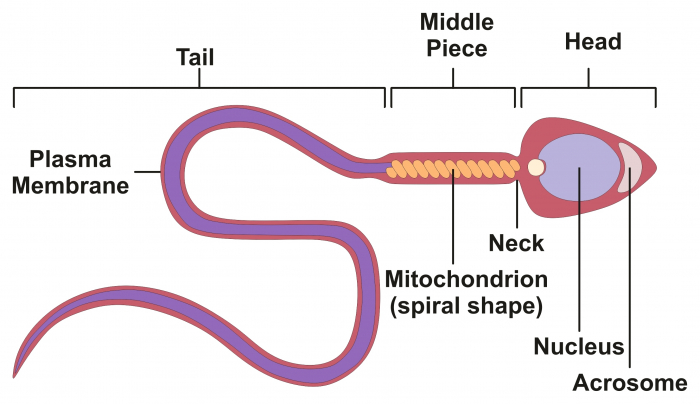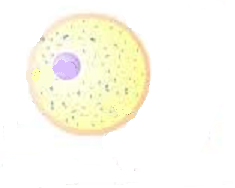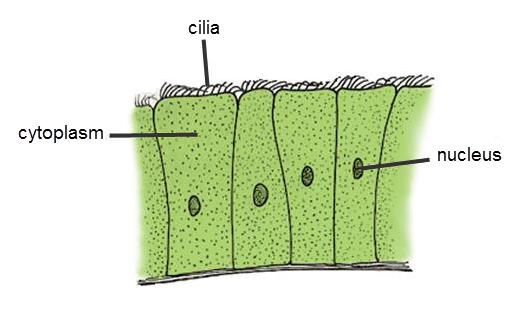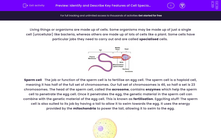Living things or organisms are made up of cells. Some organisms may be made up of just a single cell (unicellular) like bacteria, whereas others are made up of lots of cells like a plant. Some cells have particular jobs they need to carry out and are called specialised cells.

Sperm cell The job or function of the sperm cell is to fertilise an egg cell. The sperm cell is a haploid cell, meaning it has half of the full set of chromosomes. Our full set of chromosomes is 46, so half a set is 23 chromosomes. The head of the sperm cell, called the acrosome, contains enzymes which help the sperm cell to penetrate the egg cell. Once it penetrates the egg, the genetic material in the sperm cell can combine with the genetic material of the egg cell. This is known as fertilisation. Eggciting stuff! The sperm cell is also suited to its job by having a tail to allow it to swim towards the egg. It uses the energy provided by the mitochondria to power the tail, allowing it to swim to the egg.

Egg cell Similar to the sperm cell, the nucleus of the egg cell is also haploid. This means that when it's fertilised by the sperm cell, the zygote which is formed, will get a full set of chromosomes (46). The cytoplasm of the egg cell contains lots of nutrients. This is essential for the early growth of the embryo. Once fertilisation occurs, the cell membrane of the egg becomes thicker so it doesn't allow any more sperm to enter.

Ciliated epithelial cells They have tiny hair-like projections called cilia that move in a wave-like motion. These cells are usually found in our breathing passages like our trachea and nose. The cilia sweep mucus, dust and bacteria up our trachea where it can be swallowed or spat out. Lovely!
In the following activity, you will be asked to identify features of specialised cells and describe how their adaptation helps them to carry out their job.








